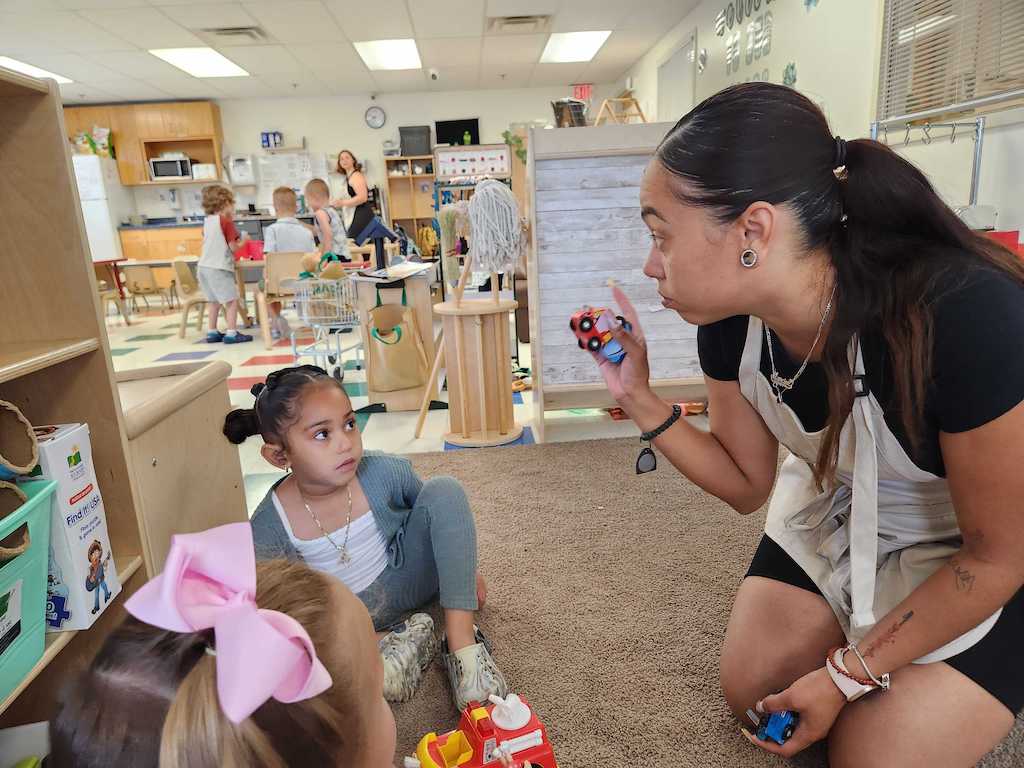Child care worker Marci Then helps her daughter, Mila, 4, put away toys. (File photo by Elaine S. Povich/Stateline.)
An analysis of Ohio’s child care funding model finds a need for better funding and a better understanding of how that funding needs to happen.
Think tank Policy Matters Ohio did the first of two planned analyses of the state’s child care system, including the Publicly Funded Child Care program, calling it “complicated, even to the most seasoned advocates.”
“Child care funding supports all parts of the system, from child care workers’ paychecks to providers licenses, to program administration,” wrote researchers Kathryn Poe and Bailey Williams.
The system in Ohio has been found to be inaccessible to some and unaffordable to many, with one survey showing nearly 60% of participants saying their child care situation wasn’t affordable.
The PFCC funding stream comes from separate sources: the state’s General Revenue Fund, Dedicated Purpose Funds and federal block grants.
Changes were made to the system in the most recent budget, with the formation of the Ohio Department of Children and Youth. The ODCY absorbed programming from the state’s Department of Job and Family Services, which led to a “major cut to their state-share operating budget,” according to the new analysis by Policy Matters.
The ODCY, with $753.4 million in state funding in fiscal year 2024 and $761.8 million in fiscal year 2025, houses the PFCC program as part of its new agency.
With funding from all sources (state and federal), the ODCY was budgeted $2.25 billion in 2024 and $2.26 billion in 2025, of which Policy Matters found that “nearly half” is dedicated to child care.
But state funding is tied to “less than a quarter” of that total, according to the analysis, with $834.90 million of the child care funding coming from federal pots via the Child Care Development Block Grant and the Temporary Assistance for Needy Families (TANF) program. The federal CDBG block grant accounts for 54% of the state’s entire child care funding allotment.
TANF money is used on PFCC payments for families under 200% of the federal poverty line.
According to state data, $619 million was left in the state TANF coffers as of 2021, the most recent data, Policy Matters’ analysis stated. That unused money is funneled toward the state’s child care spending as well, according to the study.
The topic of child care isn’t just being dissected in Ohio, as it has come up as a spotlight issue amid the campaigns for the November general election.
Polling from the child care advocacy group First Five Years Fund found that 85% of voters in “swing states,” including Ohio, said they were more likely to vote for candidates who support “increased federal funding to the states to expand child care,” and 68% of all voters said access to high-quality, affordable child care is “essential” or “very important” with regard to a stronger economy.
SUPPORT NEWS YOU TRUST.

